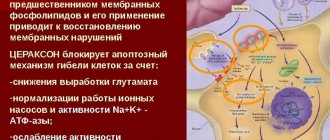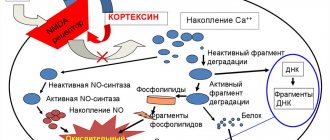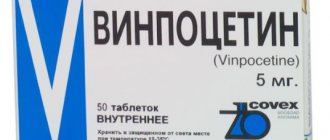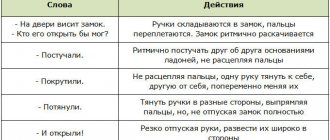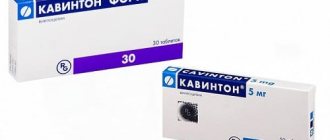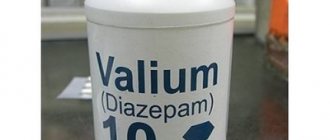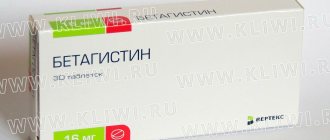Update date: 01/11/2021 15:54:46 3393 Share:
Author: Maria Feldshtein
*Review of the best according to the editors of simplerule.ru. About the selection criteria. This material is subjective in nature, does not constitute advertising and does not serve as a purchase guide. Before purchasing, consultation with a specialist is required.
According to medical statistics, about 4% of the world's population suffers from anxiety disorders. Interestingly, in Europe and North America this condition occurs more often - on average in 7.7% of people, while in Asia - only in 2.8%.
In the treatment of such disorders, drugs of various pharmacological groups are used - in particular, anxiolytics and nootropics. Representatives of these categories of drugs include Afobazole and Phenibut. The drugs differ in composition and mechanism of action, but are prescribed in similar situations. What is the difference between them - read the article.
| The drug and its characteristics | Phenibut | Afobazole |
| Pharmacological group | Nootropic drugs | Anxiolytics - anti-anxiety drugs |
| Active substance | γ-amino-β-phenylbutyric acid hydrochloride | Fabomotizole hydrochloride |
| Release form | Pills | Pills |
| Manufacturer | “Ozone”, “Organika”, etc. (Russia) | OTCPharm (Russia) |
| Price | 60-250 rub. | 300-400 rub. |
| Vacation at the pharmacy | On prescription | Over the counter |
Indications for use
Afobazole and Phenibut have one common indication - the treatment of anxiety disorders. These drugs calm the nervous system, relieve anxiety and fear, and improve the quality of life.
Other indications for prescribing drugs vary
Afobazole
Afobazole is used for certain somatic diseases accompanied by anxiety - for example, VSD, irritable bowel syndrome, bronchial asthma and hypertension. The drug normalizes brain activity, helps lower blood pressure and stabilizes heart rate. Afobazole is prescribed only in combination with other drugs and is not the only drug in this situation - it relieves accompanying symptoms, but does not treat the underlying disease.
Afobazole is also prescribed in the following situations:
- premenstrual syndrome;
- alcohol withdrawal;
- relief of withdrawal symptoms when quitting smoking;
- sleep disturbances caused by anxiety;
- adaptation disorders.
Phenibut
Phenibut is used in more complex cases:
- obsessive-compulsive neurosis;
- insomnia and nightmares;
- enuresis, stuttering and nervous tics in children;
- Meniere's disease;
- open-angle glaucoma;
- symptomatic therapy in the treatment of alcohol dependence.
Phenibut is also prescribed as a premedication before surgical operations and diagnostic procedures.
Mechanism of action of Afobazole
The drug belongs to the category of nootropic. It gently stabilizes the activity of specific CNS receptors, restores their sensitivity to inhibitory mediators, and protects nerve cells from damage. Afobazole has a pronounced neuroprotective effect, being both an anti-anxiety and a moderate stimulant. Reduces feelings of fear, emotional stress and irritation, reduces their vegetative manifestations: trembling, breathing problems, dizziness, muscle stiffness. With regular use, it eliminates the signs of post-traumatic stress disorder, restores good mood, improves concentration and performance.
It has been established that the effectiveness of taking Afobazole is higher in people of asthenic character:
- timid;
- overly suspicious;
- those who react painfully to changes in life;
- suffering from mood swings and obsessive-compulsive disorder.
Treatment with the drug does not cause addiction, subsequent withdrawal symptoms, and does not provoke the development of drowsiness, absent-mindedness or physical weakness. After administration, the active substance is quickly absorbed from the stomach into the blood and interacts with plasma proteins. It is excreted unchanged from the body within 1–2 hours.
How do drugs work?
Phenibut and Afobazole contain different active ingredients and differ in their mechanism of action.
Phenibut
Aminophenylbutyric acid hydrochloride, the active substance of the drug, affects the functioning of the central nervous system. Being a derivative of GABA, it acts as an inhibitory transmitter. The drug normalizes metabolism and blood flow in brain tissue. It has a weak anticonvulsant effect - and although it is not used as a drug for the treatment of convulsive conditions, it improves the functioning of the central nervous system,
When taking Phenibut as a course:
- reduces manifestations of asthenia;
- relieves vegetative symptoms;
- eliminates feelings of anxiety and fear;
- improves attention and memory;
- increases mental and physical performance;
- normalizes sleep.
The nootropic drug, according to the official instructions, penetrates all tissues of the body, passes into the brain, is well distributed in the liver and kidneys, but does not accumulate and is released within three hours after administration. In brain tissue, the concentration of the drug remains high for 6 hours.
Afobazole
Fabomotizol in the drug also acts on the central nervous system, but it works through other structures - sigma-1 receptors. The drug restores the sensitivity of these receptors to inhibitory mediators and has a calming effect on the central nervous system.
Afobazole works in two directions at once. As an anxiolytic, it relieves feelings of anxiety and fear, eliminates irritability and tearfulness, helps to relax and normalizes sleep. As a stimulant, it improves brain activity. Afobazole also eliminates vegetative symptoms that occur due to anxiety - sweating, rapid heartbeat, dry mouth, dizziness, etc.
Nootropics
Nootropics (from the Greek noos - thinking, mind, tropos - direction, desire, affinity) are neurometabolic drugs that have a direct activating effect on the integrative mechanisms of the brain, optimize cognition (processes of memory, thinking, intelligence) and increase the level of wakefulness (vigilance). ), increase the brain’s resistance to harmful influences, and also improve cortico-subcortical connections.
Due to the ability of nootropics to improve mentality in healthy and sick people, they are called cognitive enhancers. Nootropics stimulate the transmission of excitation in central neurons, accelerating interneuron contacts and the exchange of neurotransmitters; activate the synthesis of protein and RNA in neurons, stabilize the membranes of nerve cells, improve energy processes, microcirculation and blood supply to the brain (without vasodilation), increase the latter’s resistance to hypoxia, have pronounced antihypoxic, neurotrophic and cerebroprotective activity, etc.
At the same time, nootropics do not affect the course of neurovegetative processes, do not have significant psychostimulating, hypnotic, sedative and analgesic effects, do not cause specific changes in the EEG, do not have significant toxicity, and do not impair blood circulation. In general, the mechanism of the therapeutic effect of nootropics has not been studied enough.
1. Piracetam. Synonyms: Lucetam, Memotropil, Nootobril, Nootropil, Noocetam, Pyrabene, Piramem, Apagon, Centilan, Euvifor, Gabazet, Norotrop, Stimubral and many others. etc. Indicated for the treatment of various psychiatric, neurological and somatic diseases.
In psychiatric practice, these are asthenic disorders of various origins, mental retardation, learning difficulties, post-stress disorders, depressive states with asthenia, apathy, adynamia, lethargy and senesto-hypochondriacal symptoms, deficiency disorders in schizophrenia with a deficit of activity, attention and communication, organic processes of various etiologies , including atrophic, traumatic, vascular and intoxication. Piracetam improves the tolerability and effectiveness of antidepressants and antipsychotics, and the severity of side effects during treatment with them. Prescribed for the treatment of abstinence, relief of exogenous-organic psychoses.
In neurology and somatic practice, it is used in the treatment of a number of organic diseases of the brain (vascular processes, comatose and subcomatose states, intoxication, trauma, inflammatory processes and their consequences, birth trauma, asphyxia, the period of convalescence after meningitis, encephalitis, etc.), heart attack myocardium, cortical myoclonus, sickle cell anemia, viral neuroinfection, etc. It is prescribed orally, intramuscularly, intravenously or by infusion. In the treatment of chronic conditions, it is usually prescribed orally, regardless of food intake, 3-4 times a day in doses of up to 2.4 g, sometimes up to 3.2 g. Treatment begins with 1.2 g / day, the dose is then increased gradually, by 0 .4 g per day. The therapeutic effect occurs after 2–3 weeks of treatment; subsequently, the dose is gradually reduced to a maintenance dose of 1.2–1.6 mg/day. For stroke, up to 12 g per day is prescribed for 2 weeks. For children, the drug is prescribed in smaller doses: under 5 years of age - 200 mg 3 times a day, from 5 to 16 years - 400 mg 3 times a day.
The course of treatment with piracetam lasts from 2–3 weeks to 2–6 months.
In acute painful conditions (coma, poisoning with morphine and barbiturates, withdrawal symptoms, pre-delirious states, acute complications during psychopharmacotherapy), piracetam is prescribed intramuscularly or intravenously. Therapy begins with the introduction of 2–4 g/day and quickly increases the dose to 4–7 g/day or more. After the condition improves, they switch to taking the drug orally.
Side effects: possible agitation, irritability, anxiety, arousal (including sexual), weakness, sleep disturbance, dyspeptic disorders, abdominal pain, tremor, dizziness, allergic reactions; Elderly patients may experience an increased frequency of attacks of coronary insufficiency. Side effects occur especially often in patients with psychiatric pathology. In such cases, the dose of the drug should be reduced or stopped taking it for a while.
Contraindications for use: hypersensitivity, acute renal failure, hemorrhagic stroke, pregnancy, breastfeeding, diabetes, age under 1 year.
Release form: capsules of 400 mg in a package of 60 pieces; tablets of 200 mg in packs of 60 and 120 pieces; 20% solution in ampoules of 5 ml (1 g of substance per ampoule) in a package of 10 pieces; piracetam granules for children in a package of 56 g (2 g piracetam, 50 g sugar and fillers) in glass jars. Combination drugs are available: Fezam - contains piracetam with cinnarizine; Procetam (Orozetam) - piracetam with orotic acid; Diapiram - piracetam with diazepam, etc.
2. Aminalonum, gamma-aminobutyric acid (GABA). Synonyms: Gammalon, Ganevrin, Apogamma, GABA, Gaballon, Mielogen, etc. It is known that GABA is the main mediator involved in the processes of central inhibition through interaction with GABAergic receptors of type A and type B. A close connection of the latter with benzodiazepine receptors has been established: benzodiazepines potentiate the effect of GABA, which, in turn, is the effect of benzodiazepines, many hypnotics and anticonvulsants. Under the influence of GABA, the energy processes of the brain are activated, the respiratory activity of tissues increases, and the brain's utilization of glucose and hemodynamics improve. The nature of the action of GABA is close to nootropics. It is used mainly in geriatric practice and in the treatment of children with mental retardation, as well as for vascular disorders of the brain. There is information about the effectiveness of the use of aminalon in the treatment of depression with asthenohypochondriacal symptoms, alcoholic encephalopathy, alcoholic polyneuritis and dementia.
It is prescribed orally before meals 3-4 times a day. Adults are prescribed up to 3.75 g/day, the average dose is 1.5–3 g/day. Children, depending on age, are prescribed from 0.5 to 3 g/day. The course of treatment is up to 2–6 months. For motion sickness, adults are prescribed 0.5 g, children - 0.25 g 3 times a day for 3-4 days.
Side effects are rare; in some cases, in the first days of treatment, dyspeptic symptoms, sleep disturbances, a feeling of heat, and blood pressure fluctuations are observed. When the dose is reduced, these effects usually disappear quickly.
Contraindications for use: hypersensitivity. Release form: tablets of 0.25 g in a package of 100 pieces.
3. Sodium oxybutyrate (Natrii oxybutiratas) . Synonyms: Sodium oxybate, Sodium salt of hydroxybutyric acid, Natrium oxybutiricum, Oxybate sodium. A nootropic with pronounced antihypoxic, sedative, general anesthetic and central muscle relaxant activity, in large doses induces sleep and a state of anesthesia. Enhances the effect of analgesics, narcotic drugs, and has an anti-shock effect. In psychiatric practice, it is used to treat neurotic and neurosis-like conditions, intoxication and brain injuries, and night sleep disorders (including narcolepsy). In somatic medicine it is used as a means of anesthesia, in the treatment of hypoxic cerebral edema, hypoxic condition of the retina, and glaucoma.
Prescribed orally, intramuscularly and intravenously. Orally for the treatment of neurotic conditions, take 0.75 g (1 tablespoon of 5% solution 2-3 times a day), insomnia - 1.5-2.25 g at night once (2-3 tablespoons of 5% solution) .
Release form: 66.7% solution in 37.5 ml bottles (before use, prepare a 5% aqueous solution by diluting the contents of the bottle in 0.5 liters of freshly boiled chilled water); 20% solution in ampoules of 10 ml in a package of 10 ampoules.
Side effects: with rapid intravenous administration, there may be motor agitation, convulsive twitching of the limbs and tongue, and in case of overdose, respiratory arrest. Upon recovery from anesthesia, motor and speech agitation sometimes occur. The antidote is bemegride. With prolonged use of the drug, hypokalemia is possible.
Contraindications for use: hypokalemia, myasthenia gravis, hypersensitivity, late toxicosis of pregnancy with arterial hypertension.
4. Phenibut - see "Antidepressants."
5. Pantogamum. Synonyms: Calcium homopantothenat, Hopaten, Hopa, etc. Nootropic with anticonvulsant, moderate and short-term hypotensive effects. Prolongs the effect of barbiturates, reduces reactions to painful stimuli. It is used to treat residual organic brain failure, decreased activity and disability, mental retardation in children, and is also effective for hyperkinesis, Jacksonian epilepsy, parkinsonism, neuroleptic syndrome, clonic stuttering in children, delayed speech development, epilepsy with petit mal and polymorphic seizures (in combination with specific antiepileptic drugs).
It is prescribed orally 15–30 minutes after meals. The daily dose for adults is 1.5-3 g, for children - 0.75-3 g in three divided doses. The course of treatment is from 1 to 4 (sometimes up to 6) months. Courses of treatment are repeated if necessary.
Release forms: tablets of 0.25 g and 0.5 g in a package of 50 pieces.
6. Picamilon (Picamilonum). Nootropic with tranquilizing and vegetotropic effects. It is prescribed orally regardless of food intake. For cerebrovascular diseases and vegetative dystonia, adults are prescribed from 0.02 to 0.05 g 2-3 times a day, the course of treatment is 1-2 months, with the course repeated after 5-6 months. In the complex of antidepressant therapy in old age, 0.04–0.2 g (in 2–3 doses) is recommended for 1.5–3 months. During the period of alcohol withdrawal, 0.1–0.15 g/day is prescribed, the course of treatment is 6–7 days, the duration of treatment can be increased to 4–5 weeks in doses of 0.04–0.06 g/day. To restore working capacity, 0.06–0.08 g/day is prescribed for 1–1.5 months.
Side effects: increased irritability, agitation, anxiety, headache, dizziness, mild nausea, itching, allergic rash.
Contraindications for use: hypersensitivity, acute and chronic kidney diseases.
Release form: tablets of 0.01 g, 0.02 g and 0.05 g in a package of 30 pieces.
7. Pyriditol (Piriditolum). Synonyms: Pyritinol, Cerebol, Enerbol, Encephabol, Biocephalin, Cogitan, Enbol, Enerbol, Pyritinol, etc. A nootropic with pronounced antidepressant activity. Enhances the effects of phenamine, the anticonvulsant effect of phenobarbital, and prolongs the effect of barbiturates. Indicated for the treatment of minor depression of various origins and neurosis-like conditions with symptoms of asthenia, apathy, adynamia, as well as residual organic conditions with a predominance of anergy phenomena, in children - mental retardation, cerebrasthenic syndrome, encephalopathy, mental retardation.
It is prescribed orally 15–30 minutes after meals 2–3 times a day (it is not recommended to take the drug in the evening). The daily dose for adults is from 0.2 to 0.6 g, for children - 0.05-0.3 g. The course of treatment is from 1 to 3 months, repeated courses - after 1-6 months.
Side effects: headache, nausea, insomnia, irritability, in children - psychomotor agitation, sleep disturbance.
Contraindications for use: psychomotor agitation, epilepsy, increased convulsive readiness, hypersensitivity.
Release forms: tablets of 0.05 g, 0.1 g and 0.2 g in a package of 60 pieces. Encephabol is available in tablets of 0.1 g and in the form of syrup of 0.1 g in 5 ml.
8. Acephenum. Synonyms: Analux, Meclofenoxate, Centrophenoxine, Cerutin, Claretil, Lucidril, Meclofenoxate hydrochloride, Ropoxil, etc. Metabolic products of acephen are free radical inhibitors, have the properties of nootropics and mild stimulants and are marketed under the name Deanol (Dinetal, Etanamin, etc.). Nootropic with a moderate stimulating effect. Indicated for the treatment of asthenia, memory loss in old and senile age, obsessions and other neurotic disorders.
It is prescribed orally at 0.1–0.3 g 3–5 times a day, the course of treatment is 1–3 months. Side effects are rare. Sometimes there is an exacerbation of psychotics, fear and anxiety. Contraindications for use: infectious diseases of the central nervous system, hypersensitivity.
Release form: tablets of 0.1 g in a package of 50 pieces.
9. Memantine. Synonym: Akatinol Memantine, Akatinol Memantin. Neuroprotective, antispastic, antiparkinsonian agent. A non-competitive antagonist of N-methyl-D-aspartate (NMDA) receptors, it inhibits glutamatergic neurotransmission and the progression of neurodegenerative processes, and has a neuromodulatory effect. Indicated for the treatment of mild to moderate dysfunctions of the central nervous system (weakening of memory, attention, interests, fatigue, psychoorganic decline in personality), muscle spasticity and motor disorders due to damage to nervous structures (brain injuries, multiple sclerosis, Parkinson's disease, etc.). The drug enhances the effect of barbiturates, neuroleptics, anticholinergics, levodopa, dopamine receptor agonists, amantadine, and may change the effect of dantrolene and baclofen.
It is prescribed orally during meals, without chewing and with liquid. Adults - starting from 3 mg/day, if necessary, with a weekly increase in dose by 5–10 mg/day to 30–60 mg/day, and then reducing it to maintenance (10–20 mg/day). Children - 0.5 mg/kg/day or 1 drop per 1 kg of weight.
Side effects: dizziness, internal or motor restlessness, fatigue, increased intracranial pressure. Prescribe with caution to persons whose work requires high concentration of attention.
Contraindications for use: hypersensitivity, confusion, severe dysfunction of the liver and kidneys. Restricted for use in epilepsy, thyrotoxicosis, pregnancy, breastfeeding.
10. Cerebrolyzin. Synonym: Cebrilisin. It is a mixture of metabolically active neuropeptides with pronounced neurotrophic activity. Indicated for the treatment of organic brain damage with cognitive deficits, mental retardation
chemical development in children, dementia syndromes of various origins (Pick's disease, Alzheimer's disease, vascular dementia, etc.), as well as endogenous depression resistant to antidepressants. The drug enhances the effect of antidepressants.
Prescribed daily intravenously or intramuscularly. In acute conditions in adults (ischemic stroke, head injury, complications after brain surgery), it is administered intravenously over 60–90 minutes in an amount of 10–60 ml in 100–250 ml of saline. The course of treatment is 10–25 days. In the residual period - 5-10 ml IV for 20-30 days. For dementia syndromes - 10-20 ml IV for 3 weeks, for psychoorganic syndrome and depression - 5-10 ml IV for 20-25 days. In neuropediatric practice - 1–2 ml (up to 1 ml per 10 kg of weight) intramuscularly for 1 month, repeating the course 2–3 times a year.
Side effects: hyperthermia with rapid intravenous infusion.
Contraindications for use: hypersensitivity, acute renal failure, status epilepticus. Use with caution during pregnancy, especially in the first 3 months.
Release forms: solution of 215.2 mg in ampoules of 1 ml; 215.2 mg in ampoules of 5 ml and 10 ml; 215.2 mg in 30 ml bottles.
11. Pantogam. Nootropic with anticonvulsant and antidysuric effects. Helps normalize GABAergic transmission in chronic alcoholism, has analgesic properties, prolongs the effect of novocaine and sulfonamides, inhibits the increased bladder reflex and detrusor tone. Indicated for the treatment of disorders of higher cerebral functions of various origins in adults and children (vascular, traumatic encephalopathy, atrophic processes, etc.), treatment of epilepsy, trigeminal neuralgia, chronic neuroleptic syndrome, hyperkinesis, PTSD, urination disorders (pollakiuria, urgency , enuresis). The effects of the drug are enhanced by glycine and xidifon. Pantogam, in turn, prolongs the effect of barbiturates, potentiates the effects of anticonvulsants, nootropics, local anesthetics, and prevents the side effects of phenobarbital, finlepsin, and neuroleptics.
It is prescribed orally 15–30 minutes after meals in the morning and afternoon. Adults - 0.25–1 g per dose, 1.5–3 g/day; course of treatment - 1-6 months, repeated course - after 3-6 months. For schizophrenia (in combination with psychotropic drugs) - 0.5-3 g/day, course of treatment - 1-3 months. For epilepsy (in combination with anticonvulsants) - 0.75–1 g/day, course - up to 1 year or more. For extrapyramidal hyperkinesis (as part of complex therapy) - 0.5-3 g/day, course - 4 months or more. For the consequences of neuroinfection and head injury - 0.25 g 3-4 times a day. For asthenic conditions - 0.25 g 3 times a day. For dysuria - 0.5–1 g 2–3 times a day.
Children single dose - 0.25-0.5 g, daily dose up to 1 year - 0.5-1 g, from 1 to 3 years - 1.5-2 g, from 3 to 15 years - 2.5- 3 g. The daily dose is increased over 7–12 days, the maximum dose lasts 15–40 days, after which it is reduced until discontinued within 7–8 days. Breaks between courses of therapy are 2 months. For dysuria in children - 25–50 mg/kg, course 1–3 months.
Side effects: allergic reactions.
Contraindications for use: hypersensitivity, acute severe kidney disease, first trimester of pregnancy.
Release forms: tablets of 250 mg and 500 mg in cans of 50 pieces; 10% syrup, 50 ml and 100 ml.
12. Glycine. Nonessential amino acid. Nootropic with antiepileptic, antistress and sedative effects. Indicated for the treatment of asthenia, PTSD, neuroses and neurosis-like conditions, vegetative dystonia, acute ischemic stroke, consequences of exogenous-organic and intoxication diseases. Glycine reduces the toxicity of anticonvulsants, neuroleptics, antidepressants, and can enhance the effect of hypnotics, tranquilizers and antipsychotics.
Prescribed orally sublingually 0.1 g 2-3 times a day for 2-4 weeks. Children under 3 years old - 0.05 g 2-3 times a day, over 3 years old - 0.1 g 2-3 times a day. For sleep disorders - 0.05–0.1 g 20 minutes before bedtime. For ischemic stroke, during the first 3-6 hours - 1 g (buccal or sublingual with 1 teaspoon of water), then - 1 g / day for 1-5 days, over the next 30 days - 0.1-0 .2 g 3 times a day.
Side effects: allergic reactions are possible. Contraindications for use: hypersensitivity. Release form: tablets of 0.1 g in a package of 50 pieces.
13. Idebenone. Nootropic. Indicated for the treatment of asthenia, asthenodepressive, asthenovegetative conditions, PTSD, psychoorganic syndrome of vascular and other origins, as well as hereditary mitochondrial diseases (MELAS syndrome, Leber optic atrophy, Leigh's disease) and Friedreich's ataxia.
Prescribed orally after meals, 30 mg 2-3 times a day (last dose no later than 17:00). The course of treatment is 1.5–2 months, repeated 2–3 times a year.
Side effects: mental agitation, difficulty falling asleep, headache, dyspepsia, allergic reactions.
Contraindications for use: hypersensitivity. Use with caution during pregnancy and breastfeeding. Use with caution for persons whose work requires high concentration of attention.
Release form: tablets of 30 mg in a package of 10 pieces.
14. Gliattilin. Synonym: Choline alfoscerate. Neuroprotector, centrally acting cholinomimetic. Indicated for the treatment of exogenous-organic, atrophic diseases (cerebrovascular insufficiency, acute and recovery periods of TBI, ischemic stroke, dementia, senile pseudomelancholia).
Prescribed orally, intramuscularly and intravenously. Take 400 mg orally 2-3 times a day. IM and IV (administer slowly!) - 1000 mg/day in the morning for 15–20 days, and then orally 800 mg in the morning and 400 mg in the afternoon for 6 months.
Side effects: nausea.
Contraindications for use: hypersensitivity. It is not recommended to prescribe during pregnancy and breastfeeding.
Release form: capsules of 400 mg in a package of 14 pieces; solution of 1000 mg in ampoules of 4 ml in a package of 3 pieces.
15. Ethylthiobenzymidazol hydrochloride. Antihypoxic, psychostimulant, anxiolytic, antiasthenic agent. Indicated for the treatment of asthenic and asthenodepressive conditions of various origins.
Prescribed orally after meals and no later than 16 hours, 0.25–0.5 g 2–3 times a day (no more than 2 g/day) for 1–4 weeks or 3–5 days in a row with breaks of 2– 5 days (2–3 courses). Treatment can be repeated after 1 month. To improve performance, take 0.25 g 1–2 times a day in cycles of 5 days with 2-day breaks, a total of 4–6 courses. During treatment, you should adhere to a diet rich in carbohydrates.
Side effects: irritability, anxiety, headache, sleep disturbance, nausea, rarely - vomiting, discomfort in the epigastrium.
Contraindications for use: hypersensitivity, severe psychomotor agitation, hyperglycemia. Restricted for use during pregnancy.
Release form: tablets of 0.25 g.
16. Semax solution 0.1% (Solucio Semaxi 0.1%). Gentapeptide in preservative (nipagin). Nootropic, adaptogen. Indicated for the treatment of asthenic conditions of various origins, to increase adaptation in extreme conditions, to prevent mental fatigue during intense and monotonous work.
Prescribed intranasally, 2-3 drops in each nasal passage 2-3 times a day for 3-14 days (single dose - 200-2000 mcg, daily dose - 500-5000 mcg). It is also administered by electrophoresis (the optimal daily dose is 400–600 mcg/day).
There are no side effects observed. Contraindications for use: acute psychosis, severe anxiety, endocrine diseases, pregnancy, breastfeeding.
Release form: 0.1% drops in 3 ml bottles.
17. Deanol aceglumate. Synonym: Nooclerin. Nootropic with cerebroprotective, antiasthenic, antidepressant and hepatoprotective effects. Indicated for the treatment of asthenic, asthenodepressive conditions of various origins, withdrawal symptoms, psychoorganic, neuroleptic syndromes, mnestic-intellectual decline, neurotic, psychosomatic and neurosis-like disorders.
Prescribed orally, 1 teaspoon (1 g of the drug) 2-3 times a day (no later than 18 hours), the course of treatment is 1.5-2 months.
Side effects: allergic reactions. Contraindications for use: hypersensitivity.
18. Biotredinum. Ingredients: L-threonine (100 mg) and pyridoxine hydrochloride (5 mg). Nootropic with anti-alcohol, anti-withdrawal effects. Indicated for the treatment of reduced mental performance and concentration, pathological craving for alcohol and alcohol withdrawal. The drug reduces the side effects of neuroleptics, antidepressants, tranquilizers, and barbiturates.
Prescribed orally sublingually: children - 2 mg/kg; adolescents and adults - 1 tablet 2-3 times a day for 3-10 days. Courses of treatment are repeated 3–4 times a year or more. For chronic alcoholism, 1-3 tablets are prescribed 2-3 times a day for 4-5 days. Courses are repeated 5–10 times a year or more. For alcohol withdrawal, 1-4 tablets 3-4 times a day are prescribed on the first day, then 1-2 tablets 2-3 times a day for 3-4 weeks (the best effect is achieved when combined with 0.1 g of glycine sublingually, glycine is taken 10–15 minutes before biotredin).
No side effects were identified. Contraindications for use: alcohol intoxication. Release form: tablets of 105 mg in packages of 30 and 50 pieces.
19. Tenoten. It has anxiolytic, antidepressant, nootropic, stress-protective, antiasthenic, antihypoxic, neuroprotective effects. Indicated for the treatment of asthenic, neurotic and neurosis-like disorders with manifestations of anxiety, depression, apathy, adynamia, affective lability of various origins, especially with moderately severe organic lesions of the central nervous system.
It is prescribed orally on an empty stomach (keep the tablet in your mouth until completely dissolved). Depending on the severity of the condition, give from 1 to 12 tablets per day, the last dose is no later than 2-3 hours before bedtime. The course of treatment is up to 3 months, if necessary – up to 6 months. Courses of treatment may be repeated.
Side effects: dry mouth, heartburn, flatulence, hyperhidrosis, allergic reactions.
Contraindications for use: hypersensitivity. Release form: tablets in a package of 20 pieces.
20. Tanakan. Synonyms: Bilobin, Ginkgo Biloba, Ginkgo Biloba (BP). A nootropic with antihypoxic, angio-, cerebroprotective and antiaggregation effects, improves cerebral circulation, reduces capillary permeability, and activates intracellular metabolism. It also has an antidepressant effect and slows down the progression of degenerative processes in atrophic diseases of the central nervous system. Indicated in the treatment of the consequences of stroke, TBI, memory impairment, senile dementia, neurosensory disorders, Raynaud's syndrome, pathology of peripheral circulation, diabetic angioia and retinopathy.
Prescribed orally during meals, 3 tablets or 3 doses of solution per day. Side effects: headache, dyspepsia, allergic reactions.
Contraindications for use: hypersensitivity.
Release forms: tablets of 40 mg in packages of 30 and 90 pieces; drinking solution 30 ml in a bottle.
Back to contents
Assessing the effectiveness of drugs
Comparative studies of the two drugs - Phenibut and Afobazole - have not yet been conducted. Since Phenibut is more often used in psychiatry, and Afobazole is used as an adjuvant for mild anxiety disorders, their scope of use usually does not overlap. Therefore, we studied each drug separately and can evaluate them in terms of effectiveness and safety.
Phenibut
In the international medical knowledge base PubMed, there are about 200 articles on the active substance included in the drug - but most of them describe the effect of the drug in laboratory conditions (in vitro). Tests on humans are also available, but they do not meet international standards. For example, there is evidence that the drug:
- tension headaches in children and adolescents;
- fight chronic fatigue;
- used in children;
- helps to cope with;
- alleviates the condition.
But from the standpoint of evidence-based medicine, Phenibut is considered an ineffective drug.
Afobazole
There is also no serious evidence base for Afobazole. They talk about him only in Russian-language literature:
- Afobazole for anxiety and neuroses. There is evidence that the drug acts slowly but effectively: it improves well-being in the 4th week of treatment and causes virtually no adverse reactions.
- Afobazole and for generalized anxiety disorders. Scientists believe that the drug can be used over a long course without reducing its effectiveness.
- There is no mention of this drug in PubMed or the Cochrane Library.
Simultaneous use
When treating depressive conditions and various disorders of the central nervous system, it is important to know whether Phenibut and Afobazole can be taken at the same time.
Each of the drugs has a positive effect on the functioning of the nervous system, eliminates anxiety and relieves feelings of fear. In case of primary identified disorders of the central nervous system, neurologists recommend starting treatment with Phenibut, then Afobazole can be taken. The simultaneous use of medications is not excluded, but in minimal effective doses, the compatibility of Phenibut with Afobazole is good. As an addition to this treatment regimen, specialists can prescribe glycine, as well as vitamin complexes to normalize the functioning of the peripheral nervous system and central nervous system. You can take these drugs together after consulting your doctor and only according to the recommended regimen.
Adverse reactions
According to the instructions, the drugs can cause the following symptoms:
- Phenibut: irritability, increased excitability, increased anxiety, headache, dizziness, drowsiness, skin rash. At the beginning of therapy there may be nausea.
- Afobazole: allergic reactions. There may be a headache, but it goes away on its own and does not require cessation of therapy.
